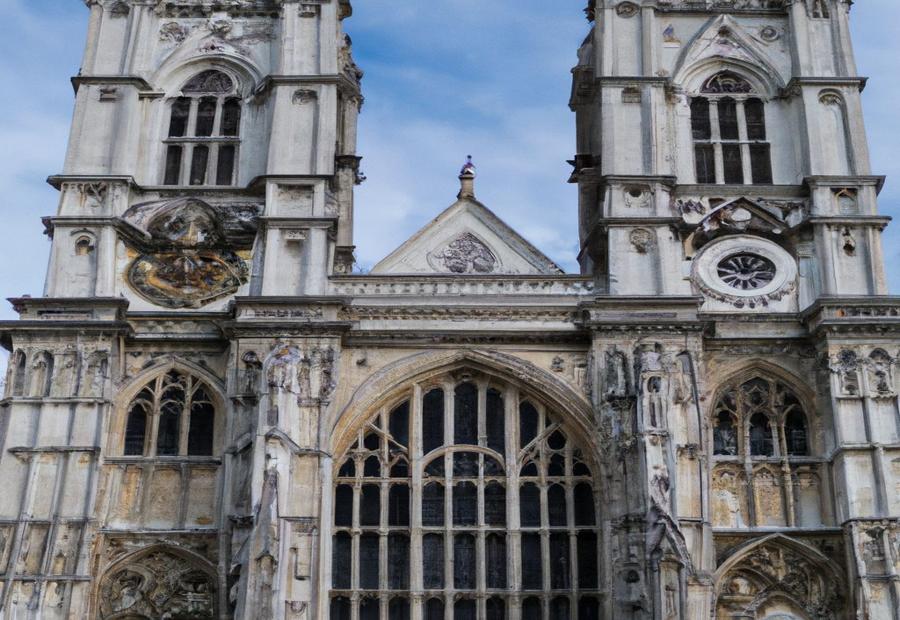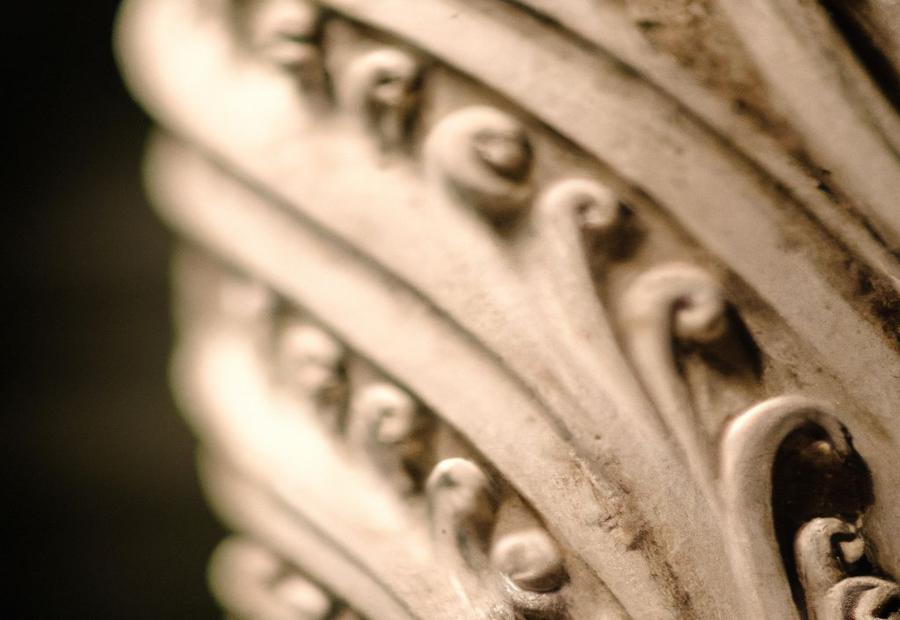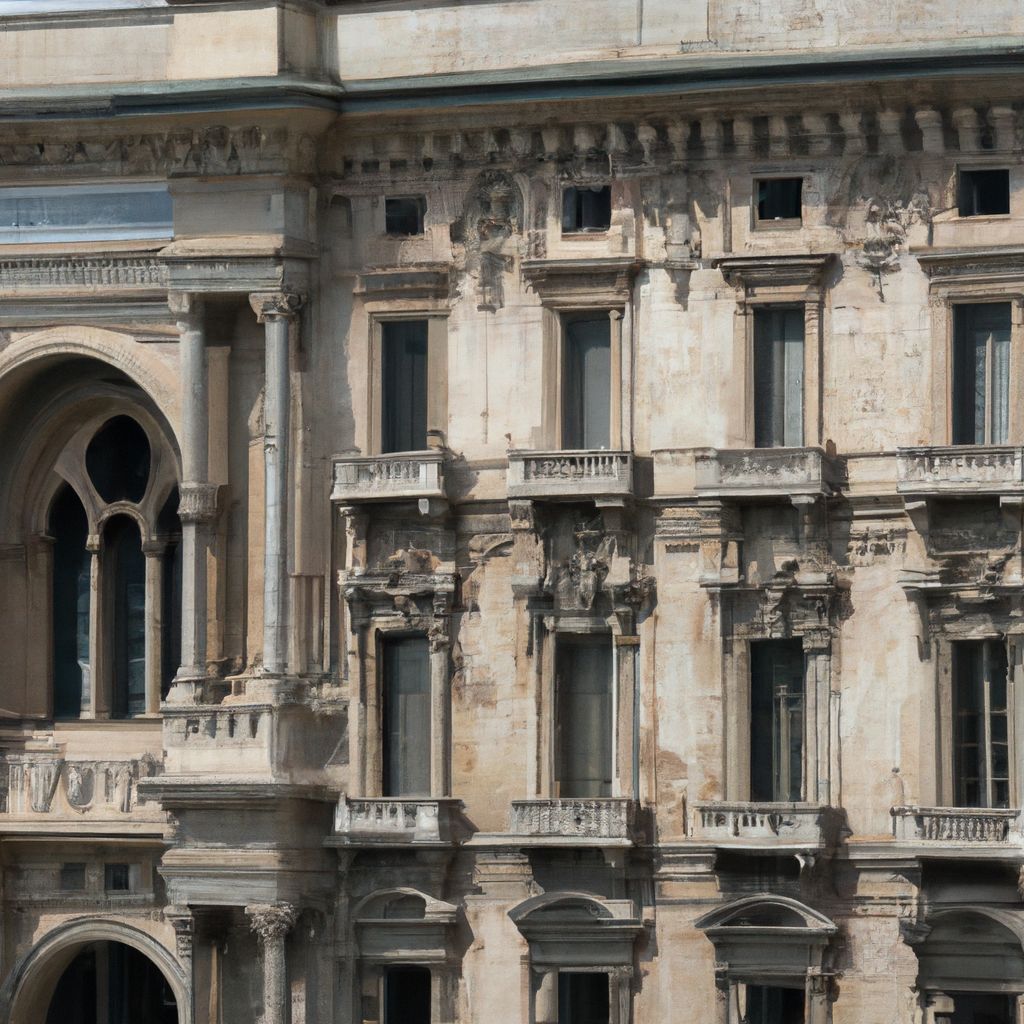Key Takeaway:
- The Renaissance period in architecture was heavily influenced by Classical Rome, with notable architects such as Filippo Brunelleschi, Leon Battista Alberti, and Andrea Palladio contributing to the revival of classical design principles.
- Renaissance architecture is characterized by key elements such as symmetry, harmonious proportions, domes, and columns, as exemplified by the Florence Cathedral.
- Humanism played a significant role in Renaissance architecture, as it emphasized the importance of individualism, human-centered design, and the integration of art and architecture.



Photo Credits: Build-Wire.Com by Henry Nguyen
Architectural Renaissance: Reviving the Art of Design sets the stage for a captivating exploration of the Background and Purpose of this article. Get ready to uncover the rich history, remarkable achievements, and profound significance of the architectural renaissance. Discover the driving forces behind this revival and the aspirations that fuel it. Buckle up for a journey into the world of design, where past and present intertwine to shape a captivating future.
Background
Renaissance architecture was deeply impacted by classical Rome. It featured elements like arches, columns, and domes. Filippo Brunelleschi, Leon Battista Alberti, and Andrea Palladio championed this influence.
Brunelleschi was inspired by Roman structures. His use of linear perspective on the Florence Cathedral’s dome showed his grasp of Roman engineering. Alberti took Roman design principles further with mathematical precision. He outlined rules and guidelines in his book “De re aedificatoria” based on Vitruvius.
Palladio was a major figure in the Renaissance. He harmoniously combined symmetry and proportion in his villas and palaces. This mirrored classical Roman ideals.
The bigger context of Renaissance architecture was humanism. It highlighted humans’ potential and achievements. Architects sought to create structures that celebrated human intellect and creativity.
Ultimately, the background of Renaissance architecture was a mix of classical Roman design principles and humanistic values. This gave rise to an architectural era which still impacts design today.
Purpose of the article
Renaissance architecture was greatly inspired by Classical Rome. This article dives into the impact of Rome on this architecture. We’ll look at key architects such as Filippo Brunelleschi, Leon Battista Alberti, and Andrea Palladio, and their inspiration from ancient Roman architecture. We’ll explore the key elements and characteristics of Renaissance architecture, using Florence Cathedral as an example. Humanism’s role in shaping Renaissance architecture and its effect on design principles will also be discussed. Understanding these aspects helps readers gain a better understanding of the architectural renaissance that happened during this time.
The Influence of Classical Rome on Renaissance Architecture



Photo Credits: Build-Wire.Com by David Moore
Classical Rome left an indelible mark on Renaissance architecture, with figures like Filippo Brunelleschi, Leon Battista Alberti, and Andrea Palladio leading the way. Their contributions revolutionized the art of design, transcending time and inspiring future generations. Delve into the profound influence of Classical Rome on Renaissance architecture and discover the architectural masterpieces shaped by these extraordinary minds.
Filippo Brunelleschi
Filippo Brunelleschi achieved something memorable: the design and construction of the Florence Cathedral dome. To do this, he used math and geometry to make a freestanding, octagonal dome. His work also changed perspective drawing. He added linear perspective to create a realistic effect.
Also, he focused on symmetry and harmony in architecture. This influenced how columns, pediments, and arches were used in Renaissance architecture. Other architects, such as Leon Battista Alberti and Andrea Palladio, further developed these ideas.
Brunelleschi’s work raised the bar for architectural design. His ideas, engineering skills, and attention to detail are still admired today. Leon Battista Alberti is especially remembered for transforming ancient Rome into a Renaissance sandbox for architects.
Leon Battista Alberti
Alberti, a renowned Renaissance architect, welcomed ancient ideals and their use in modern architectural design. He adhered to mathematical proportions and harmony in his designs, inspired by Vitruvius, a Roman architect. His church of Sant’Andrea in Mantua is a notable example of his incorporation of arches, columns and pediments, reminiscent of classical Roman architecture.
Alberti’s “De Re Aedificatoria,” a treatise on architecture, had a major effect on Renaissance architecture. This treatise detailed his theories, accentuating the importance of proportion, ornamentation and spatial arrangement. His words were a guiding light for generations of architects, influencing the growth of architectural styles during the Renaissance.
Apart from architecture, Alberti extended his interests to painting, sculpture and literature. Following the concept of humanism, he strongly emphasized human potential and achievement. This belief greatly impacted his approach to architecture, as he sought to construct structures that reflected human proportion and beauty.
In conclusion, Leon Battista Alberti’s ideas and designs were a key factor in the formation of Renaissance architecture. By reintroducing and incorporating classical Roman principles and humanist ideals into architectural practice, he connected past and present, leaving an everlasting mark on the architecture of his time and beyond.
Andrea Palladio
Andrea Palladio was an influential Renaissance architect. He believed geometry, harmony and balance were key to architecture. He took inspiration from the ancient Roman Pantheon. He wanted to create buildings that not only worked, but also inspired admiration. His works embodied Renaissance humanism, which looked to revive classical art and culture.
Palladio is famous for creating the Palladian style. This style featured elements like pediments, columns, arches and domes. It had huge influence on many European architects in future centuries.
But Palladio’s influence was not only limited to his designs. He wrote a famous treatise called “Four Books on Architecture”. This outlined his design principles and guided future architects. It remains an important source of inspiration, ensuring Palladio’s legacy in the field.
Key Elements and Characteristics of Renaissance Architecture



Photo Credits: Build-Wire.Com by Stephen Green
Shaping the grandeur of Renaissance architecture, this section explores the key elements and characteristics that define this artistic movement. Discover the magnificence of the Florence Cathedral, a remarkable embodiment of the Renaissance spirit. Explore the architectural prowess and intricate details that make this landmark a testament to the era’s ingenuity and creative brilliance.
Florence Cathedral
The Florence Cathedral, also known as Santa Maria del Fiore, was built with architectural principles from the Renaissance period. Filippo Brunelleschi, a prominent architect of the time, played a major role in its creation (Reference: 2). He included columns, arches and geometric patterns in the design, which showed classic influence on Renaissance architecture.
The Florence Cathedral is an example of Renaissance architecture’s grandeur and magnificence (Reference: 2). Its dome, designed by Filippo Brunelleschi, is a masterpiece that displays the technical knowledge and creative thinking of the time. The facade of the cathedral also has intricate carvings and sculptures that demonstrate the detailed style of Renaissance architecture.
The Florence Cathedral has marble panels in various colors on its external walls, which is a unique feature (Reference: 3). These different hues and textures give more depth and visual appeal to the design. Inside the cathedral is Giotto’s Bell Tower, another architectural marvel that complements the grandeur of the cathedral (Reference: 3).
The Florence Cathedral is a demonstration of how Renaissance architecture revived classical design ideas while adding its own special touch. It is a magnificently beautiful structure that reflects the brilliance and beauty of the era.
The Role of Humanism in Renaissance Architecture



Photo Credits: Build-Wire.Com by Matthew Hill
Humanism played a pivotal role in shaping Renaissance architecture, influencing every aspect of design. From the rediscovery of classical principles to the focus on human-centered spaces, this sub-section will delve into the profound impact of humanism on architectural development during this era.
Humanism’s impact on architecture
Humanism had a big effect on Renaissance architecture. Architects began to prioritize human-scale proportions and design that harmonized. This was inspired by ancient Roman buildings. Filippo Brunelleschi, Leon Battista Alberti, and Andrea Palladio used humanist ideas to make classical motifs and symbols part of architectural ornamentation. This represented the importance of human accomplishments and ideals.
Symmetry, proportionality, and rationality became key points of Renaissance architecture. These architects studied ancient Roman buildings to gain a mathematical understanding. This knowledge was then used to craft their own designs. Classical elements like columns, arches, and domes were revived.
Humanist ideas shaped the philosophy of Renaissance architecture. Buildings were designed to suit the needs and aspirations of individuals. Nature’s proportions were appreciated and a connection with divine perfection was sought. This is seen in Florence Cathedral, where every detail is ordered and balanced.
Humanism influenced entire cities. Grand squares, triumphal arches, and monumental facades were built. This represented civic pride while celebrating human achievements. Function blended with symbolism to create amazing cityscapes that still captivate visitors today.
The impact of humanism on Renaissance architecture is clear. Modern architectural principles were influenced by it. By prioritizing individual needs and embracing classical ideals, spaces were built to celebrate humanity’s link with nature and the divine. To truly understand this architecture, it must be experienced firsthand. Don’t miss out on exploring these incredible structures that show off human creativity and skill.
Conclusion



Photo Credits: Build-Wire.Com by Brian Robinson
The architectural renaissance: a movement that is transforming the art of design. Traditional principles and modern advancements are being blended together to create stunning and innovative masterpieces. Architects are reconnecting with the essence of design, and embracing collaboration with other disciplines. The result? Buildings that are visually appealing, environmentally friendly, and in harmony with their surroundings.
Don’t miss out on this era of design. Become part of the movement and join a community of visionary architects. Create buildings that stand the test of time and leave an impact that is profound. The opportunities are endless, and the possibilities are infinite. Don’t let fear keep you from being part of this revolutionary renaissance.
Some Facts About Architectural Renaissance: Reviving the Art of Design:
- ✅ Italian Renaissance architects were deeply influenced by classical Roman examples in their theories and practices. (Source: Team Research)
- ✅ Renaissance architects believed that a pilgrimage to Rome to study ancient buildings and ruins was essential for their training. (Source: Team Research)
- ✅ Renaissance buildings incorporated classical orders and architectural elements such as columns, pilasters, pediments, arches, and domes. (Source: Team Research)
- ✅ Renaissance architects aimed to create structures that would appeal to both emotion and reason, emphasizing harmonious form and mathematical proportion. (Source: Team Research)
- ✅ Filippo Brunelleschi, considered the first Renaissance architect, engineered the dome of Florence Cathedral and introduced the consistent and appropriate use of classical orders. (Source: Team Research)
FAQs about Architectural Renaissance: Reviving The Art Of Design
Q: How were Italian Renaissance architects influenced by classical Roman examples?
A: Italian Renaissance architects drew inspiration from classical Roman examples in their theories and practices. They looked to ancient Roman buildings and ruins, considering a pilgrimage to Rome essential for their training. This influence is evident in the use of classical orders and architectural elements such as columns, pilasters, pediments, arches, and domes in Renaissance buildings.
Q: Who were the key figures in the Renaissance architectural revival?
A: Two key figures in the Renaissance architectural revival were Filippo Brunelleschi and Leon Battista Alberti. Brunelleschi, considered the first Renaissance architect, engineered the dome of Florence Cathedral and was the first to use classical orders consistently and appropriately. Alberti was an architect, humanist, musician, and art theorist who aspired to recreate the glory of ancient times through architecture. Both Brunelleschi and Alberti were greatly influenced by the writings of Vitruvius.
Q: What characterized the architectural style of the Renaissance?
A: Renaissance architecture is characterized by harmonious form, mathematical proportion, and a unit of measurement based on the human scale. Architects trained as humanists during the Renaissance aimed to create structures that appealed to both emotion and reason. The use of classical orders, such as Doric, Ionic, and Corinthian, and architectural elements like columns, arches, and domes are prominent features of Renaissance buildings.
Q: How did Vitruvius’ writings influence the Renaissance definition of beauty in architecture?
A: Vitruvius, a Roman architect and author of “De architectura,” greatly influenced the Renaissance definition of beauty in architecture. His writings emphasized the importance of proportion, symmetry, and harmony in design. Renaissance architects studied and drew inspiration from Vitruvius’ theories on architecture, which contributed to the revival of classical Roman ideals in Renaissance buildings.
Q: How did the architectural achievements of Filippo Brunelleschi differ from their appearance?
A: While Filippo Brunelleschi’s structures may appear simple, they are actually based on an underlying system of proportion. Brunelleschi, trained as a goldsmith before becoming an architect, engineered the iconic dome of Florence Cathedral. His architectural achievements were groundbreaking in their use of classical orders, yet their simplicity masked the intricate calculations and precision required for their construction.
Q: How did Andrea Palladio’s architectural designs gain popularity beyond Italy?
A: Andrea Palladio, the chief architect of the Venetian Republic during the Renaissance, specialized in domestic architecture, particularly villas. His designs were often centrally planned and drew inspiration from Roman models of country villas. Palladio’s designs were simple and easily reproducible, making them popular not only in Italy but also in rural England and the American colonies. Their widespread appeal contributed to the dissemination of Renaissance architectural principles.
